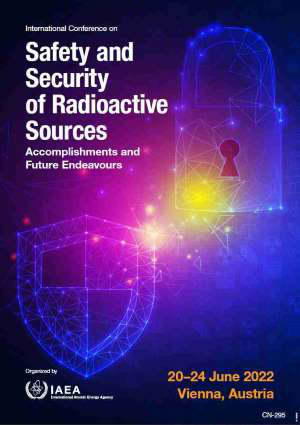Speaker
Description
The majority of sealed radiation sources are gamma and beta emission sources based onshort-lived radionuclides such as Cs-137, Sr-90, Co-60 and others. Been disused these sources aren’t suitable for reproduction and should be disposal. Since 1960-th in Soviet Union and some Eastern Europe countries such sources were collected in special well-type storage facilities. This storage facility consists of 200-liters drum made of stainless steel placed on the bottom of 4 meters depth concrete well. The curved loading pipe 108 mm diameter leads from the surface to the drum in order to load sources into the storage facility from special transport containers with bottom unloading. The loading funnel placed on the surface to place transport container into it. All free space in the well is filled with concrete or sand.
According to the project about 20 000 Ci of sources may be load into this storage facility. The main limitation factors were temperature in the drum and dose rate on the surface. In 1980-th the technology of encapsulation of sources in the storage facility into metal matrix was developed by specialists of Radon. This technology was able to increase the activity loaded into the storage facility up to five times without overheating of the sources. Additionally the metal matrix protected the sources from environment, such as ground water that may be collected in the drum.
In 2011 the Federal Law of radioactive waste was issued. According this law all new radioactive waste, including disused sources must be transferred to national operator of radioactive waste management for final disposal. Therefore, useof the well-type storage facilities for DSRS storage became out of law because of big technical problem of safe unloading sources from the storage facility.
In order to solve the problem of collect, interim storage and transportation to final disposal of SRS the storage container was developed at Radon. This container consists ofmetal vessel 80 liters volume for sources surrounded by radiation shield made of lead. The loading pipe covered with protection lid leads into the vessel for SRS loading. Whole this module is placed in a protective metal container, the external dimensions of which are the same as the widely used container for radioactive waste, which simplifies the rigging work with it.
The radiation shield of the storage container was designed to ensure that the dose rate on the surface of the container is not more than 2 mSv/h when loaded into the container at least 100000 Ci of sources based on Co-60. It was calculated and tested that the temperature in the vessel is not more than 100 degrees when 100 000 Ci of Co-60 sources loaded. Also the sources may be included into metal matrix in the container as in the well-type storage facilities.
The storage container ensures safety and security of storage and disposal sources in it.
The set of tools and instruments was designed with the container for DSRS safe loading from the same transport containers with bottom unloading that use for well-type storage facilities.
Now these storage containers are in use at Radon and some other organizations in Russia for radioactive waste management.
| Country OR Intl. Organization | Russian Federation |
|---|

